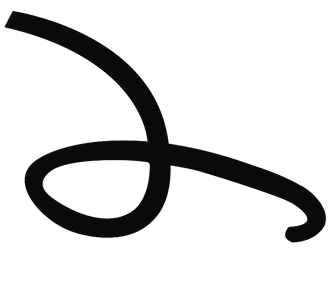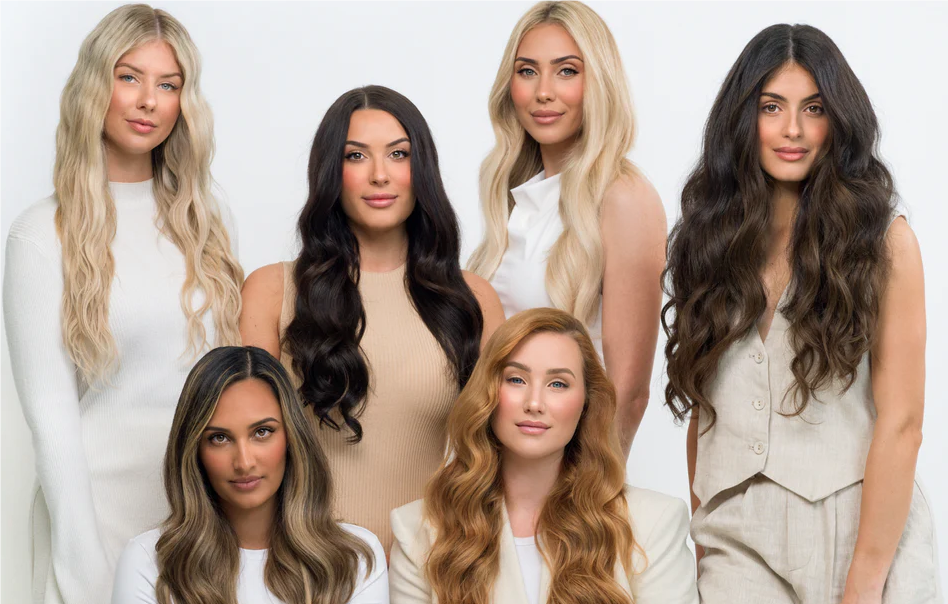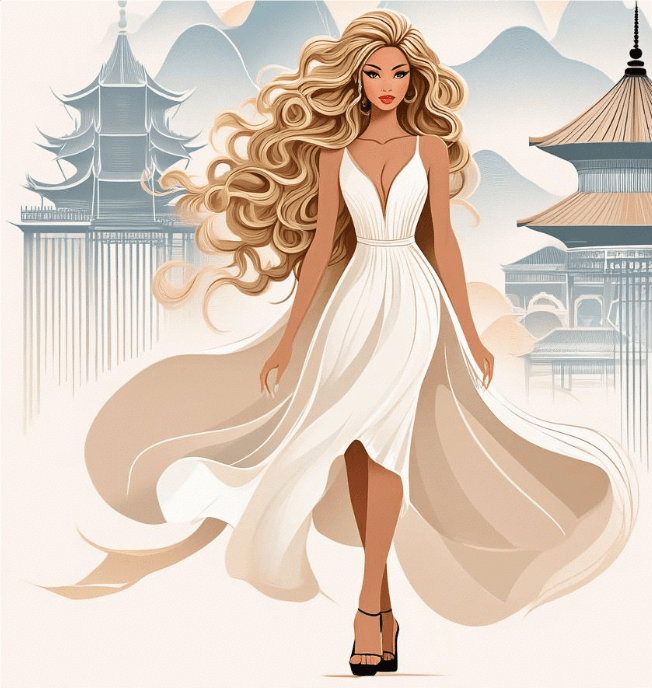Hair Extensions Tape in Human Hair: A Focus on White Women, Product Features, and Cultural History
Hair Extensions Tape in Human Hair: A Focus on White Women, Product Features, and Cultural History
Hair extensions, especially tape in human hair extensions, have become a popular beauty solution for many women, including white women, looking to add volume, length, and versatility to their hairstyles. These extensions offer a natural look and feel, making them a preferred choice for those who want to enhance their appearance while maintaining a seamless blend with their natural hair. This article will focus on the appeal of tape in human hair extensions to white women, their unique product features, and the cultural history that has shaped the use of hair extensions.

Why White Women Choose Tape in Human Hair Extensions
For white women, the main draw of tape in human hair extensions lies in their ability to deliver a natural and luxurious look. These extensions are designed to blend flawlessly with natural hair, allowing women to achieve the desired volume and length without the heaviness or bulk that can come with other types of extensions. The seamless application of tape in extensions provides an invisible look that many white women value, especially for hairstyles that emphasize smooth, sleek textures or soft, flowing waves.

Additionally, white women often choose tape in human hair extensions because of the ability to color and style them. Since these extensions are made from real human hair, they can be dyed to match any color shade or highlight. This flexibility is crucial for those who want to customize their extensions to blend with their natural hair color, whether it be blonde, brunette, red, or any other shade. The option to heat-style the extensions, whether curling, straightening, or blow-drying, also enhances their appeal for women who enjoy changing up their look frequently.

Key Product Features of Tape in Human Hair Extensions
Tape in human hair extensions have several features that make them stand out as a top choice for those seeking a more natural and versatile hair enhancement.

Natural Appearance: Because these extensions are made from 100% human hair, they closely resemble natural hair in texture and appearance. This is essential for women, especially those with fine or straight hair, as it allows for a seamless blend with their own hair.

Comfortable and Lightweight: Tape in extensions are known for being lightweight, which makes them comfortable to wear even for extended periods. This is particularly important for women with thin or fragile hair, as the extensions won’t put too much strain on the scalp.

Semi-Permanent: One of the appealing aspects of tape in extensions is that they are semi-permanent. Once applied by a professional stylist, they can last 6-8 weeks before needing to be repositioned or reapplied, making them a convenient option for women looking for a longer-term solution.

Easy to Maintain: Tape in extensions are relatively easy to maintain with the right care. White women often enjoy that these extensions can be washed, styled, and treated like their own hair, reducing the hassle that can come with other types of extensions.

Customizable: Tape in human hair extensions can be cut and styled to fit individual preferences, allowing women to achieve their desired look, whether it's adding layers, enhancing thickness, or creating volume.

Cultural History of Hair Extensions
Hair extensions have been used in various cultures for centuries, symbolizing status, beauty, and personal expression. In Western cultures, the history of hair extensions, particularly for white women, gained popularity in the mid-20th century and has evolved ever since.

Historically, hair has played an important role in symbolizing femininity, beauty, and social standing in many societies. In ancient Egypt, both men and women wore wigs and extensions made from human hair or plant fibers as a status symbol. These early hairpieces were often elaborate and used to signify wealth and nobility.

In Europe, hair extensions gained popularity during the Renaissance period, when women began using wigs and hairpieces to create voluminous hairstyles. The practice of adding hair for length and volume continued through the 18th and 19th centuries. During the Victorian era, hair extensions were often used to create intricate updos, adding to the era's obsession with elaborate hairstyles.

The modern hair extension industry for white women took off in the 1960s and 1970s when celebrities began popularizing long, voluminous hairstyles. With the advent of new materials and techniques, including the development of tape in extensions in the early 2000s, women had access to more natural-looking and practical solutions for achieving the hairstyles they desired. Tape in extensions became particularly popular because of their lightweight and non-damaging nature, making them a go-to option for those looking to enhance their hair without causing harm.

In recent decades, the accessibility of hair extensions has expanded significantly. The introduction of human hair extensions allowed for a more realistic appearance, and tape in extensions, in particular, revolutionized the market with their easy application, durability, and comfort. The ability to offer white women customizable options in terms of color, length, and texture has cemented the popularity of tape in human hair extensions in contemporary beauty practices.

Conclusion
In conclusion, tape in human hair extensions are a popular and versatile solution for white women looking to enhance their hairstyles. The natural appearance, comfort, and semi-permanent application make them a top choice for women who want to add length, volume, or change their look without compromising the health of their natural hair. The cultural history of hair extensions further highlights the long-standing desire for beautiful, voluminous hair that transcends time and fashion trends. As the hair extension industry continues to evolve, tape in extensions remain a staple, offering a seamless and elegant solution for achieving a fuller, more glamorous hairstyle.





